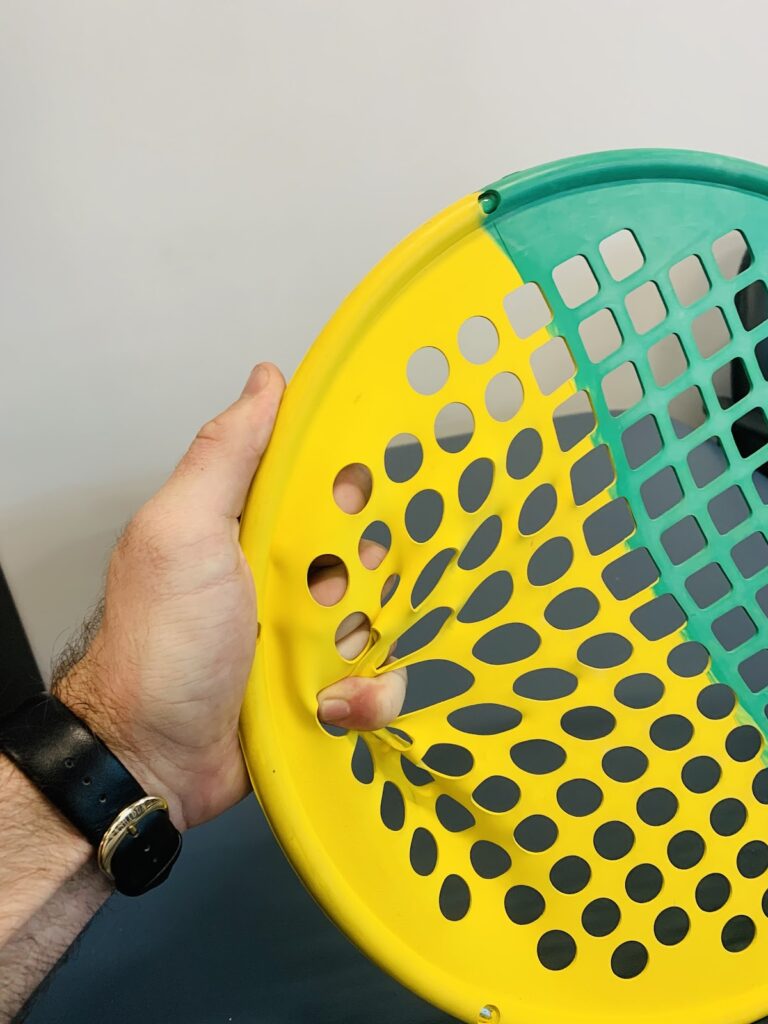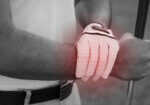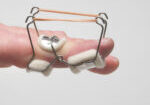Clients who have experienced a fracture of the finger or hand often find it difficult to participate in meaningful occupations. Everyday tasks from grasping items, cutting food, taking lids off containers, turning keys, and many others can be very painful. Pinky fracture is particularly challenging and painful. This is typical because the largest contributor to our “power grasp” comes from our hand’s ulnar side, which includes the small finger. Many clients’ goal with this type of injury is to regain their hand function for grasping items and the use of the “power grasp.”
There are many ways to treat small finger fractures as we help clients regain function and use of the injured digit. Some of the most common treatments include short arc pain-free range of motion and low load prolonged stretching. Additionally, we have a few other ways to target the mobility and strength of the small finger directly:
Some of our Favorites
Caliper and sponge cube grasp can help address whole hand grasp and promote power grasp from the hand’s ulnar side. This strength-based activity can be graded up or down based on where the spring is placed between the calipers.

Small finger cone stacking can be used for small finger range of motion specifically. This activity can be graded up or down by how far up or down the client is able to grasp the cone with their small finger.

A dynamic device can be made from a piece of theraband, which Is then run through the loops of Toggle Spring Stop and can be pulled as tight or loose as needed to meet the client’s needs. This is an excellent adjunct for a client’s home exercise program to simulate a low load version of stretching.

A power web can be used to strengthen the small finger. Place the small finger through the power web hole to pull and hold to create tension on the small finger’s flexors by pulling downward and isometrically firing the finger flexors. This is as much a strength-based activity as it is a pain-free range of motion. Patients are encouraged to stop just short of pain and hold their fingers flexed against the resistance for 10 seconds.

Small finger opposition coin grasp can be useful for the thumb and small finger dexterity and pain-free range of motion.

It can be tricky to find functional and purposeful ways to work on small finger mobility and therapy functions. These are some of our favorites. What are some of yours?
2 Comments
Leave a Comment
More To Read
How to Improve Fine Motor Translation Skills
By: Josh MacDonald The Basics – I lay a pile of small objects on the table and an open container for the client to put them into. What object I use depends on the client’s level. We’ll get to that later. Then, they use a 2-point pincer grasp to pick up one and shift it…
Read MoreA Hand Therapist’s Role in Nutrition Education for Wound Healing
By Brittany Day Role of nutrition in wound healing Nutrition plays an important function in the biological factors that contribute to normal wound healing (wound care nutrition). Patients without nutrient dense diets may experience diminished cell production, collagen synthesis, and wound contraction. There is sparse scientific evidence that explores the exact science behind nutrition and…
Read MoreWhich is better for DeQuervain’s: Splinting or Injection?
Rapid Review Cavaleri, R., Schabrun, S. M., Te, M., & Chipchase, L. S. (2016). Hand therapy versus corticosteroid injections in de Quervain’s disease treatment: A systematic review and meta-analysis. Journal of hand therapy: official journal of the American Society of Hand Therapists, 29(1), 3–11. https://doi.org/10.1016/j.jht.2015.10.004 The Skinny: DeQuervain’s Tenosynovitis is a stenosing tenosynovial inflammation affecting the…
Read MoreManagement of the Stiff Finger: Evidence and Outcomes
Title: Management of the Stiff Finger: Evidence and Outcomes Reference: Yang, G., McGlinn, E. P., & Chung, K. C. (2014). Management of the stiff finger: Evidence and outcomes. Clinics in Plastic Surgery, 41(3), 501–512. https://doi.org/10.1016/j.cps.2014.03.011 Article Review By: Tommi Hintnaus The Skinny: This study focuses on understanding and managing finger stiffness, a condition characterized by…
Read MoreSign-up to Get Updates Straight to Your Inbox!
Sign up with us and we will send you regular blog posts on everything hand therapy, notices every time we upload new videos and tutorials, along with handout, protocols, and other useful information.







How about pajama elastic and a safety pin from the IP flexion stretching and using 9-hole peg and removing pegs by grasping with SF in hook position once they progress pass the larger diameter of the cones.
That sounds like a great exercise to try. I shall try that one since I’m looking for ways to help fix my previously fractured pinky finger. It’s difficult to bend whatsoever. 💔 I haven’t been able to get it to move well. Even at physical therapy appts. Looking for ways to practice exercises away from actual p.t appts. as well. Tyvm!